- Choosing the Right Bean Variety
- Preparing the Soil for Planting
- 1. Choose the Right Location
- 2. Clear the Area
- 3. Test the Soil
- 4. Amend the Soil
- 5. Loosen the Soil
- 6. Level the Soil
- 7. Water the Soil
- 8. Consider Mulching
- 9. Allow Soil to Settle
- Sowing the Bean Seeds
- Providing Adequate Water and Sunlight
- Supporting the Bean Sprouts as They Grow
- Protecting the Bean Sprouts from Pests
- 1. Clean the Growing Area
- 2. Use Protective Barriers
- 3. Apply Natural Pest Deterrents
- 4. Attract Beneficial Insects
- 5. Regularly Monitor the Sprouts
- 6. Consider Natural Pesticides
- 7. Practice Companion Planting
- Harvesting the Bean Sprouts at the Right Time
- Storing and Using the Bean Sprouts
- Storing Bean Sprouts
- Using Bean Sprouts
- “Question-Answer”
- What is a self-propeller for planting bean sprouts?
- How does a self-propeller work?
- What are the advantages of using a self-propeller for planting bean sprouts?
- Can a self-propeller be used for planting other crops?
- Where can I purchase a self-propeller for planting bean sprouts?
- “Video” How to Grow Microgreens EASILY for 49¢ a Day! A Complete Guide for Beginners Organic & Non-GMO
Bean sprouts are a nutritious and delicious addition to any meal, and growing your own can be a rewarding experience. If you have a self-propeller, you’re in luck – it’s an easy and efficient way to plant bean sprouts. In this guide, we’ll walk you through the process of planting bean sprouts step by step, so you can enjoy fresh and crunchy sprouts right at home.
Step 1: Prepare the Self-Propeller
Before you can start planting your bean sprouts, you’ll need to prepare the self-propeller. Make sure it is clean and free of any dirt or debris. This will help ensure healthy and successful sprouting.
Step 2: Soak the Bean Seeds
Next, you’ll need to soak the bean seeds. Place them in a bowl or container filled with water and let them soak for about 8-12 hours. This will help soften the seeds and encourage germination.
Step 3: Load the Self-Propeller
Once the seeds have soaked, it’s time to load the self-propeller. Gently place the soaked seeds into the designated compartment of the propeller. Avoid overcrowding the seeds to ensure proper sprouting.
Step 4: Water the Self-Propeller
After loading the seeds, water the self-propeller to provide moisture for the sprouting process. Make sure to water evenly, but avoid over-watering as it can lead to mold or rot. Keep the propeller in a warm and sunny location to promote healthy growth.
Step 5: Monitor and Harvest
Finally, it’s time to monitor the growth of your bean sprouts. Keep an eye on the propeller and make sure to water it regularly to maintain adequate moisture levels. After a few days, you’ll start to see the sprouts emerging. Once they reach the desired length, usually around 2-3 inches, you can harvest them by gently pulling them off the propeller.
Pro tip: Rinse the harvested bean sprouts thoroughly before consuming them to remove any excess dirt or debris.
By following these simple steps, you’ll be able to plant bean sprouts from a self-propeller with ease. Enjoy the process and savor the taste of freshly grown sprouts in your meals!
Choosing the Right Bean Variety
When it comes to choosing the right bean variety for sprouting, it’s important to consider a few factors. Different varieties of beans have different taste profiles and growth characteristics. Here are some key points to keep in mind when selecting your bean variety:
- Growth Time: Some bean varieties take longer to sprout than others. If you’re looking for a quick sprouting option, choose a variety with a shorter growth time.
- Taste: Beans come in a wide range of flavors, from sweet to nutty to earthy. Consider the taste profile you prefer and choose a variety that matches your preferences.
- Size: Beans come in various sizes, from small to large. Smaller beans may be better suited for sprouting as they tend to have a more tender texture.
- Availability: Some bean varieties may be more readily available in your area or at your local grocery store. Check with your local seed supplier or market to see what options are available.
Here are a few popular bean varieties that are commonly used for sprouting:
- Mung Beans: Mung beans are one of the most popular choices for sprouting. They have a mild flavor and a crunchy texture.
- Adzuki Beans: Adzuki beans are slightly sweet and have a nutty flavor. They are often used in Asian cuisine.
- Lentils: While technically not a bean, lentils are often used for sprouting. They come in various colors and have a mild flavor.
- Garbanzo Beans: Garbanzo beans, also known as chickpeas, are another popular choice for sprouting. They have a nutty flavor and are often used in Mediterranean and Middle Eastern cuisine.
Once you have chosen the right bean variety, you can move on to the next steps in the planting process!
Preparing the Soil for Planting
Before you start planting bean sprouts, it is important to prepare the soil properly. Follow these steps to ensure a healthy growing environment for your sprouts:
1. Choose the Right Location
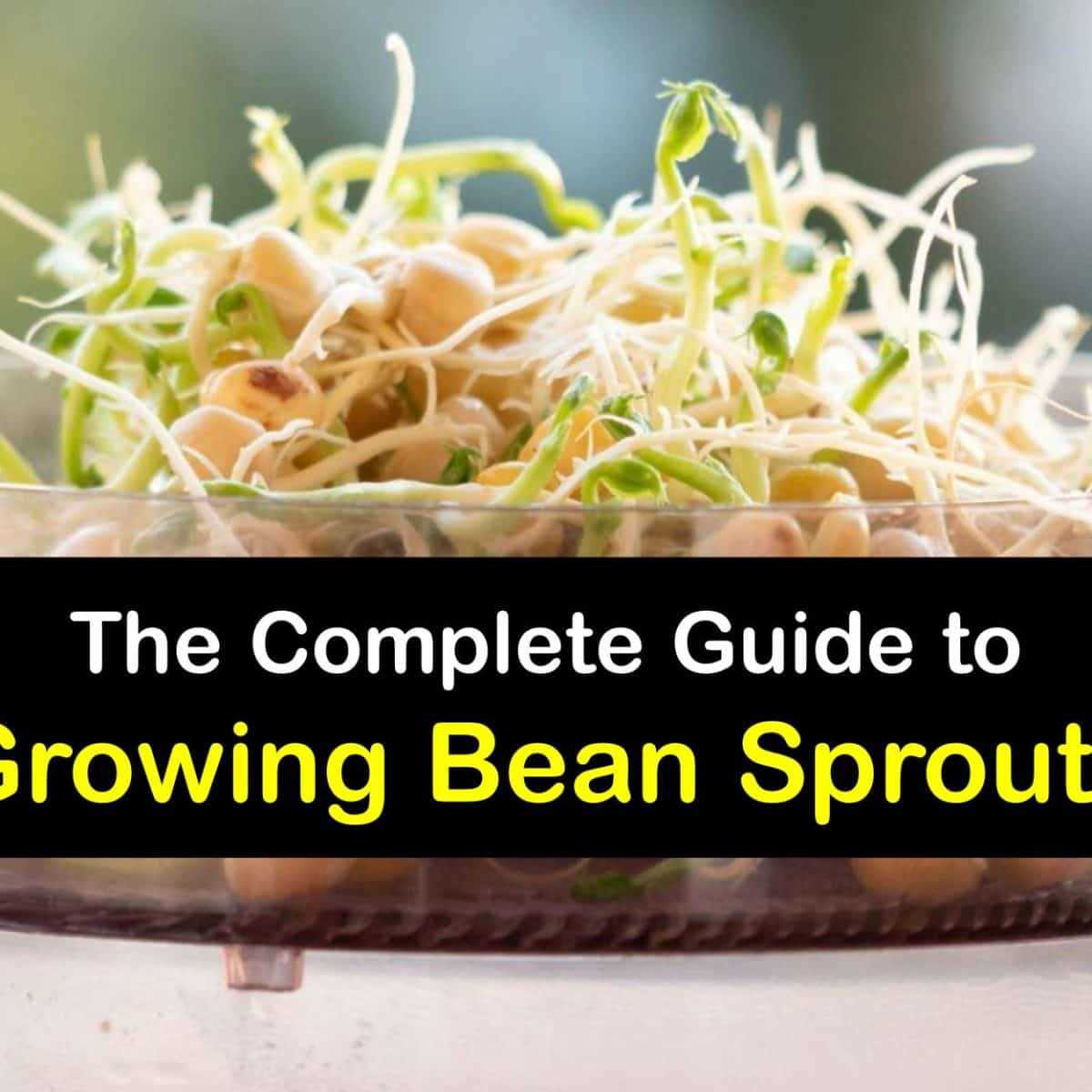
Select a sunny spot in your garden or choose a suitable container for indoor cultivation. Bean sprouts thrive in full sun, so make sure the chosen location receives at least 6 hours of direct sunlight per day.
2. Clear the Area
Remove any weeds, rocks, or debris from the planting area. These can hinder the growth of the bean sprouts and compete for nutrients. Ensure the soil is relatively free of clumps and smooth for easy planting.
3. Test the Soil
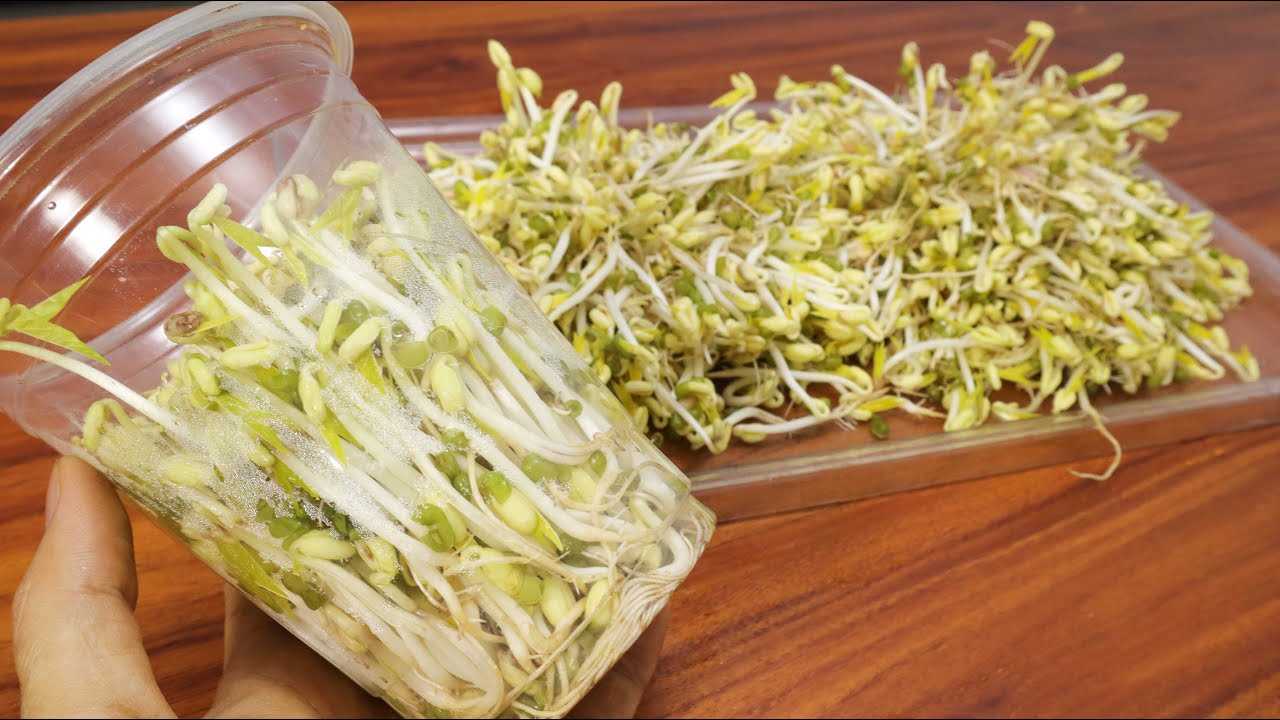
Take a soil sample and test it to determine its pH level and nutrient content. Bean sprouts prefer a slightly acidic soil with a pH range of 6.0 to 6.8. If the pH is higher or lower, you may need to make amendments to adjust it accordingly.
4. Amend the Soil
If necessary, add organic matter such as compost or well-rotted manure to improve the soil texture and fertility. This will enhance drainage and provide essential nutrients for the bean sprouts.
5. Loosen the Soil
Use a gardening fork or a tiller to loosen the soil to a depth of 6 to 8 inches. This will help the bean sprout roots penetrate easily and allow for better water and nutrient absorption.
6. Level the Soil
Rake the soil to create a smooth and even surface. This will prevent water from pooling and ensure uniform growth of the bean sprouts.
7. Water the Soil
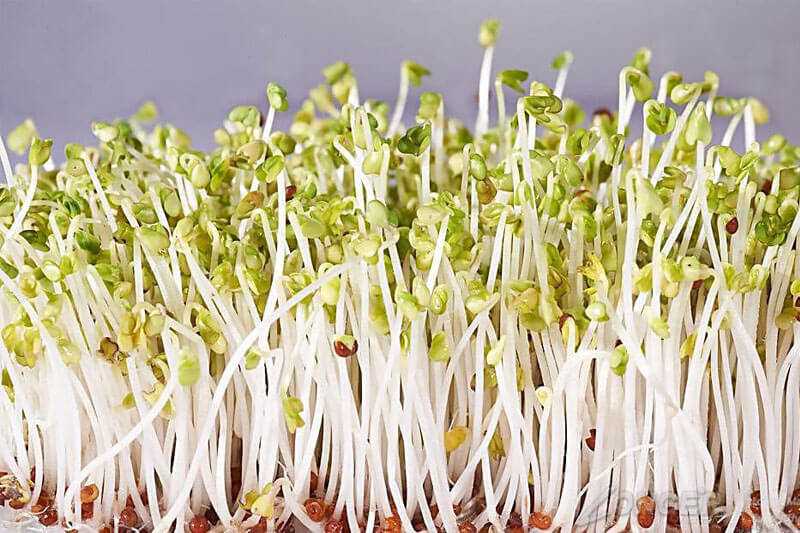
Before planting, thoroughly water the soil to ensure it is evenly moist. This will provide a conducive environment for the bean sprout seeds to germinate and establish strong roots.
8. Consider Mulching
To retain moisture and prevent weed growth, consider applying a layer of organic mulch such as straw or wood chips around the planted bean sprouts. This will also help regulate soil temperature and reduce evaporation.
9. Allow Soil to Settle
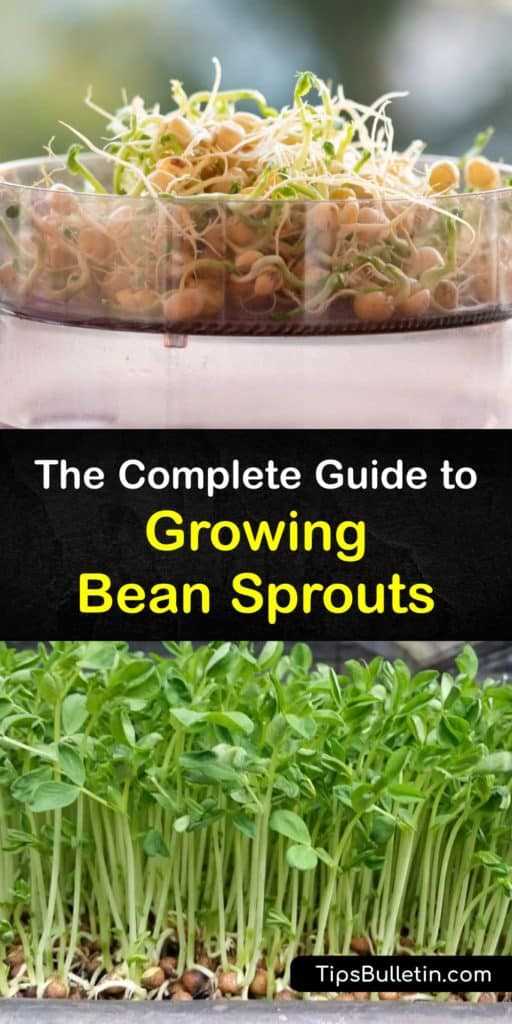
Give the soil a day or two to settle before planting the bean sprouts. This will allow any air pockets to dissipate and ensure better root growth.
By following these steps, you will create an ideal soil environment for planting bean sprouts. Remember to regularly water and care for the sprouts to ensure successful growth and a bountiful harvest.
Sowing the Bean Seeds
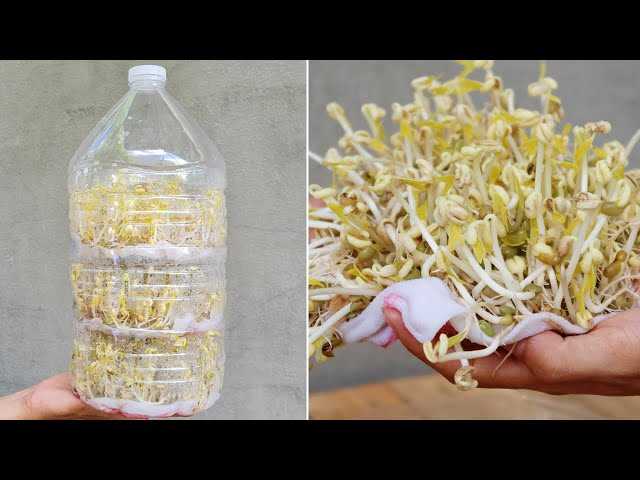
Once you have prepared your self-propelled container for planting, it is time to sow the bean seeds. Follow these steps to ensure successful sprouting:
- Soak the seeds: Before sowing, soak the bean seeds in water for approximately 8 to 12 hours. This will help soften the seeds and promote germination.
- Prepare the soil: While the seeds are soaking, prepare the soil in your self-propelled container. Ensure it’s well-draining and has a pH level of around 6 to 7, which is optimal for bean sprouts.
- Sow the seeds: After the seeds have soaked, evenly spread them on the surface of the soil in your container. Make sure to leave some space between each seed to allow them to grow properly.
- Cover the seeds: Gently cover the seeds with a thin layer of soil, approximately 1/4 to 1/2 inch deep. This will provide them with enough protection while still allowing them to receive enough light for germination.
- Water the seeds: Water the seeds immediately after covering them. Make sure the soil is evenly moist but not soaking wet. Watering with a fine mist sprayer can help prevent displacing the seeds.
- Place the container: Find a suitable spot for your container where it can receive ample sunlight. Ideally, bean sprouts need at least 6 hours of direct sunlight per day.
- Keep the soil moist: Regularly check the moisture level of your soil and water as necessary. Bean sprouts prefer slightly moist soil, so avoid letting it dry out completely.
- Wait for germination: Bean seeds typically germinate within 7 to 10 days. During this time, make sure to provide adequate sunlight and maintain the soil moisture to support the sprouting process.
Following these steps will give you the best chance of successfully sowing your bean seeds and growing healthy bean sprouts in your self-propelled container.
Providing Adequate Water and Sunlight
Watering:
- Bean sprouts require regular and consistent watering to keep the soil moist throughout the growing process.
- Water the bean sprouts gently to prevent damaging the delicate sprouts. A watering can or gentle misting with a spray bottle is ideal.
- Avoid overwatering as it can cause the sprouts to rot. The soil should be moist but not waterlogged.
- Check the moisture level of the soil by inserting your finger about an inch deep into the soil. If it feels dry, it’s time to water.
- Water the bean sprouts once or twice a day, depending on the humidity and temperature in your environment.
Sunlight:
- Bean sprouts require indirect sunlight for optimal growth. Place them in a location that receives bright, indirect sunlight for about 4-6 hours a day.
- Direct sunlight can scorch the delicate sprouts, so it’s important to provide shade during the hottest parts of the day.
- If you don’t have a suitable location with indirect sunlight, you can use artificial lights such as fluorescent or LED grow lights.
- Ensure that the light source is positioned at an appropriate distance from the sprouts to avoid overheating and burning.
Temperature:
- Bean sprouts prefer temperatures between 60°F and 80°F (15°C and 27°C).
- Avoid exposing the sprouts to extreme temperatures, as it can hinder their growth and development.
Humidity:
- Bean sprouts prefer a humid environment with a relative humidity between 40% and 60%.
- If the air in your environment is dry, you can increase humidity by placing a tray of water near the sprouts or using a humidifier.
- Monitor the humidity level and adjust accordingly to create a suitable growing environment for the bean sprouts.
Fertilizer:
- Bean sprouts don’t require additional fertilizer during the sprouting stage.
- Once the sprouts have developed into full-grown bean plants, you can consider applying a balanced organic fertilizer according to the manufacturer’s instructions.
- Be careful not to over-fertilize, as it can lead to excessive vegetative growth and may negatively impact the bean crop.
Supporting the Bean Sprouts as They Grow
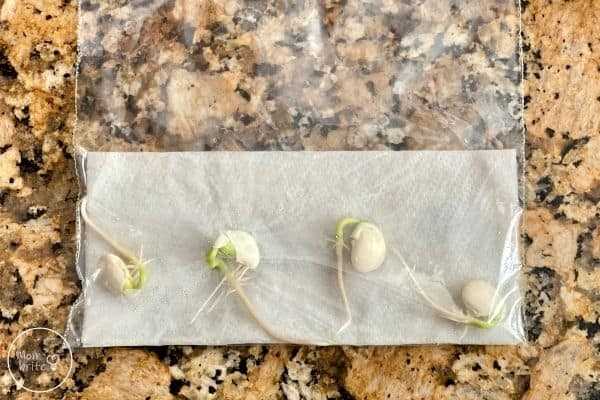
As your bean sprouts begin to grow, it’s important to provide them with proper support to ensure healthy and upright growth. Here are some steps to support your bean sprouts:
- Staking: If your bean sprouts are growing tall and appear weak, you may need to stake them for support. Gently insert a thin stake or bamboo pole into the soil next to the sprout, being careful not to damage the roots. Secure the stem to the stake using a soft plant tie or string. This will help the sprout grow straight and strong.
- Trellis or Support Structure: Consider providing a trellis or support structure for your bean sprouts if you have multiple plants in a confined space. This will allow the sprouts to grow vertically, saving space and promoting better airflow. You can use a premade trellis, a wire mesh fence, or construct your own support using bamboo poles or wooden stakes.
- Pruning: If your bean sprouts become too bushy and tangled, it’s beneficial to prune them. Use clean gardening shears to carefully remove any excess foliage, focusing on thinning out dense areas. This will promote better air circulation and reduce the risk of diseases.
Note: Providing support to your bean sprouts is especially important if you are growing a climbing variety, such as pole beans or runner beans. These plants naturally seek support as they grow taller.
By implementing these support measures, you can ensure that your bean sprouts grow strong, healthy, and upright throughout their growth cycle.
Protecting the Bean Sprouts from Pests
When growing bean sprouts from a self-propeller, it is important to protect them from pests that can damage or eat the sprouts. Pests can include insects, birds, and rodents. Here are some steps you can take to protect your bean sprouts:
1. Clean the Growing Area
Before planting the bean sprouts, make sure the growing area is clean and free from debris. Remove any weeds, leaves, or other potential hiding places for pests. This will help reduce the likelihood of pests coming into contact with your sprouts.
2. Use Protective Barriers

One effective way to protect your bean sprouts from pests is to use physical barriers. You can cover the growing area with a fine mesh or netting that is small enough to keep out pests while still allowing sunlight and air to reach the sprouts.
3. Apply Natural Pest Deterrents
Some natural substances can help deter pests from your bean sprouts. For example, sprinkling crushed eggshells around the growing area can help deter slugs and snails, as they don’t like the sharp edges. You can also try placing mothballs or garlic cloves in strategic locations to repel certain pests.
4. Attract Beneficial Insects
Consider attracting beneficial insects to your bean sprout garden. Ladybugs, lacewings, and praying mantises are natural predators of pests and can help control populations. Planting flowers like marigolds can attract these beneficial insects.
5. Regularly Monitor the Sprouts
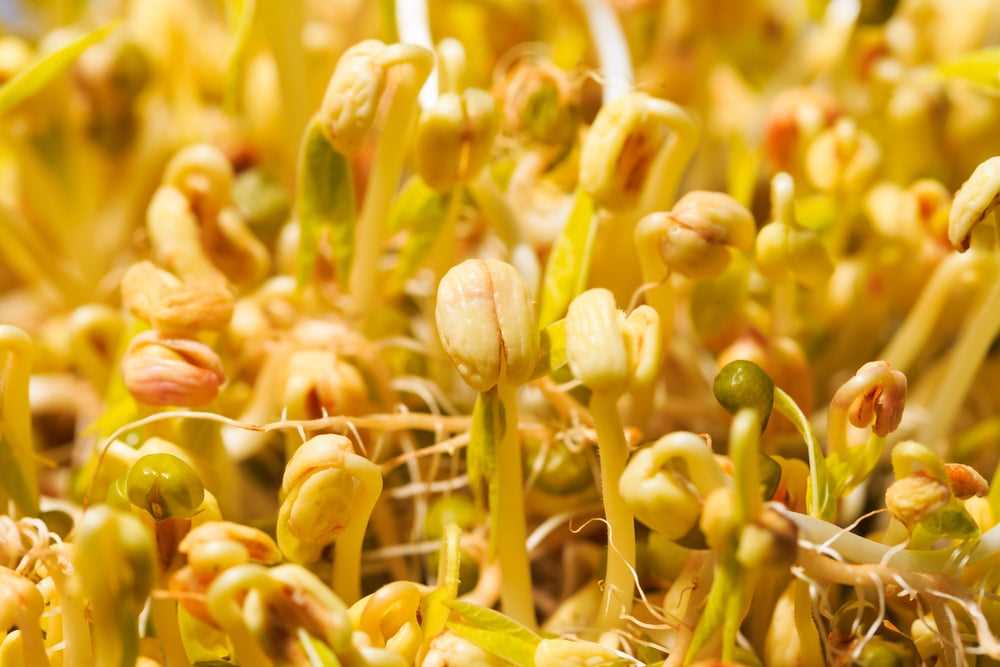
Keep a close eye on your bean sprouts and regularly inspect them for signs of pest damage. Look for holes in the leaves, chewed stems, or other visible signs of pest activity. By catching pest problems early, you can take action to minimize damage.
6. Consider Natural Pesticides
If the pest problem becomes severe, you may need to consider using natural pesticides. These can include insecticidal soaps or oils made from plant extracts. Be sure to follow the instructions carefully and avoid using chemical pesticides, as they can be harmful to both the pests and the environment.
7. Practice Companion Planting
Some plants emit natural scents that can repel pests. Consider planting companion plants such as mint, basil, or rosemary near your bean sprouts to help deter pests.
By following these steps, you can protect your bean sprouts from pests and ensure a healthy, thriving harvest.
Harvesting the Bean Sprouts at the Right Time
Harvesting your bean sprouts at the right time is crucial to ensure they are at their peak freshness and flavor. Here are some steps you can follow:
- Observe the growth: As your bean sprouts grow, keep a close eye on their progress. They will go through different stages, from small sprouts to longer and thicker shoots.
- Check for leaves: Once your bean sprouts start to develop leaves, it’s a good indication that they are ready for harvest. The leaves will be green and vibrant, signaling that the sprouts are mature enough to be consumed.
- Test the texture: Gently touch the bean sprouts to see if they have reached the desired texture. They should be crisp and tender, without any signs of wilting or mushiness.
- Time it right: The ideal time to harvest bean sprouts is when they are around 4-6 inches in length. This is when they are at their peak flavor and texture. Avoid waiting too long, as they can become tough and bitter.
- Use a clean pair of scissors: To harvest your bean sprouts, use a clean pair of scissors to cut them just above the soil level. Be careful not to damage any neighboring sprouts or the roots.
- Store properly: After harvesting, rinse your bean sprouts with cold water to remove any dirt or debris. Dry them gently with a clean towel and store them in an airtight container in the refrigerator. They can be kept for up to a week, but it’s best to consume them as soon as possible for optimal freshness.
By following these steps, you can ensure that your bean sprouts are harvested at the right time, resulting in delicious and nutritious sprouts to enjoy in your favorite dishes.
Storing and Using the Bean Sprouts
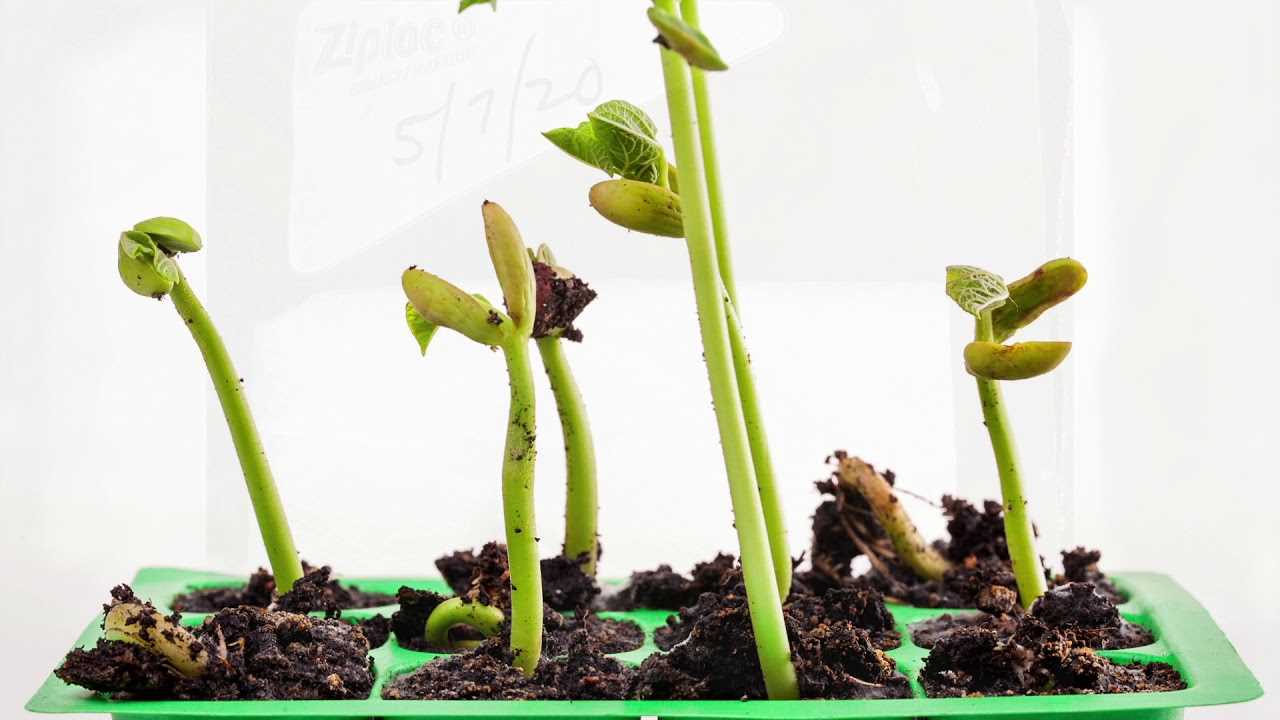
Storing Bean Sprouts
Once your bean sprouts have reached the desired length, it’s time to store them properly to maintain their freshness and crispness. Here are some steps to follow:
- Remove any excess moisture from the bean sprouts by gently patting them dry with a paper towel or clean cloth.
- Transfer the bean sprouts to a clean, airtight container. You can use a plastic bag, a glass jar, or a food storage container.
- Seal the container tightly to prevent air and moisture from entering.
- Store the bean sprouts in the refrigerator. The ideal temperature for storing bean sprouts is around 35°F to 40°F (1.6°C to 4.4°C).
- Check the bean sprouts periodically and remove any that have become slimy or discolored. It’s important to discard any spoiled bean sprouts to prevent them from contaminating the rest.
Using Bean Sprouts
Bean sprouts can be used in a variety of dishes, adding a crunchy texture and fresh flavor. Here are some ways to incorporate bean sprouts into your meals:
- Add bean sprouts to stir-fries and fried rice. They can be cooked quickly, maintaining their crispness.
- Toss bean sprouts into salads for an extra crunch.
- Use bean sprouts as a topping for sandwiches or wraps.
- Incorporate bean sprouts into soups or noodle dishes for added texture.
- Try marinating bean sprouts in a mixture of soy sauce, sesame oil, and garlic for a flavorful side dish.
Experiment with different recipes and cooking methods to find your favorite ways to enjoy bean sprouts!
“Question-Answer”
What is a self-propeller for planting bean sprouts?
A self-propeller for planting bean sprouts is a device that automates the process of planting bean sprouts. It saves time and effort by automatically sowing the seeds in a pre-determined pattern, ensuring optimal growth and yield.
How does a self-propeller work?
A self-propeller works by using a set of rotating blades or paddles to plant the seeds at a consistent depth and spacing. The device is usually attached to a tractor or other farm equipment, which propels it forward while the blades or paddles drop the seeds into the soil. Some self-propellers also have sensors and controls to adjust the planting depth and spacing according to specific requirements.
What are the advantages of using a self-propeller for planting bean sprouts?
Using a self-propeller for planting bean sprouts offers several advantages. Firstly, it saves time and effort compared to manual planting. The device can cover larger areas in a shorter amount of time, increasing efficiency. Secondly, it ensures consistent planting depth and spacing, which results in more uniform growth and higher yields. Additionally, a self-propeller can plant the seeds in a predetermined pattern, allowing for easier cultivation and harvesting.
Can a self-propeller be used for planting other crops?
Yes, a self-propeller can be used for planting various crops, not just bean sprouts. The device can be adjusted to accommodate different seed sizes, planting depths, and spacing requirements. This versatility makes it a valuable tool for farmers who grow a variety of crops and need efficient planting methods.
Where can I purchase a self-propeller for planting bean sprouts?
A self-propeller for planting bean sprouts can be purchased from agricultural equipment suppliers, farm supply stores, or online marketplaces. It is recommended to research different models and compare prices, features, and customer reviews before making a purchase. Additionally, consulting with local farmers or agricultural experts can provide valuable insights and recommendations.







